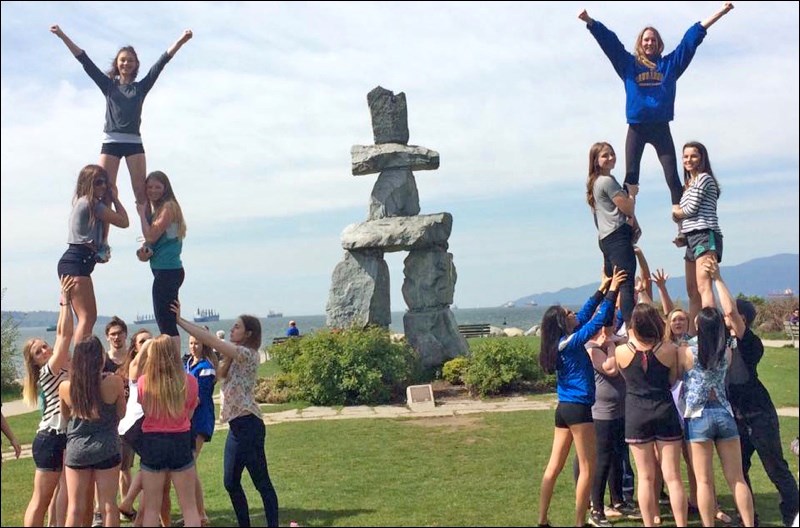One of the frequently asked questions people have about the sport of cheerleading is about the levels at competitions. First of all, there are two main streams of cheerleading. The origins of the sport are on the sidelines of other sports like college football and basketball. These cheer routines and stunts and chants are choreographed to enhance the experience of the game. This format, known as “varsity cheerleading,” is not judged for points, so no leveling is applied.
The second stream, known as “all star” cheerleading, is focused on competitive performance. All star cheer is performed for an audience and a bank of judges who use scoresheets to record the performance numerically and assign rankings, first place, second place, medals, trophies, cash prizes, etc. The points are calculated to the hundredth decimal point so coaches and judges are very focused on those precious points that determine podium, or no podium.
All star cheerleading provides opportunities for athletes of all ages and experience levels to compete in a division according to their age, team composition,and level. Tiny Level 1 would be simplified choreography for ages 5-6. Senior Level 1 is the same level, but choreography can be more complex for ages 15-18.
The levels are based on increasing levels of complexity in stunting and tumbling. For example, Level 1 tumbling includes front roll, back walk-over, front handspring, and round-off. Level 2 tumbling builds on the skills from Level 1, so Level 2 includes a cartwheel, round-off, back handspring sequence. Level 3 includes a back tuck added on to the end of a tumbling pass, and so on.
A similar grid applies to stunting. Level 1 stunts are at or below shoulder height and there is no tossing. Level 2 includes basic tossing and stunts are at shoulder height. Level 3 stunting allows one leg skills and flyers can do a single skill during a toss. Levels 4, 5 and 6 include multiple skills during tosses, and level 6 allows three levels of humans in the stunt: a base layer, middle layer and tops make the third layer.
In October 2018, the International All Star Federation, the world wide governing body for cheerleading, announced the addition of Level 7.



